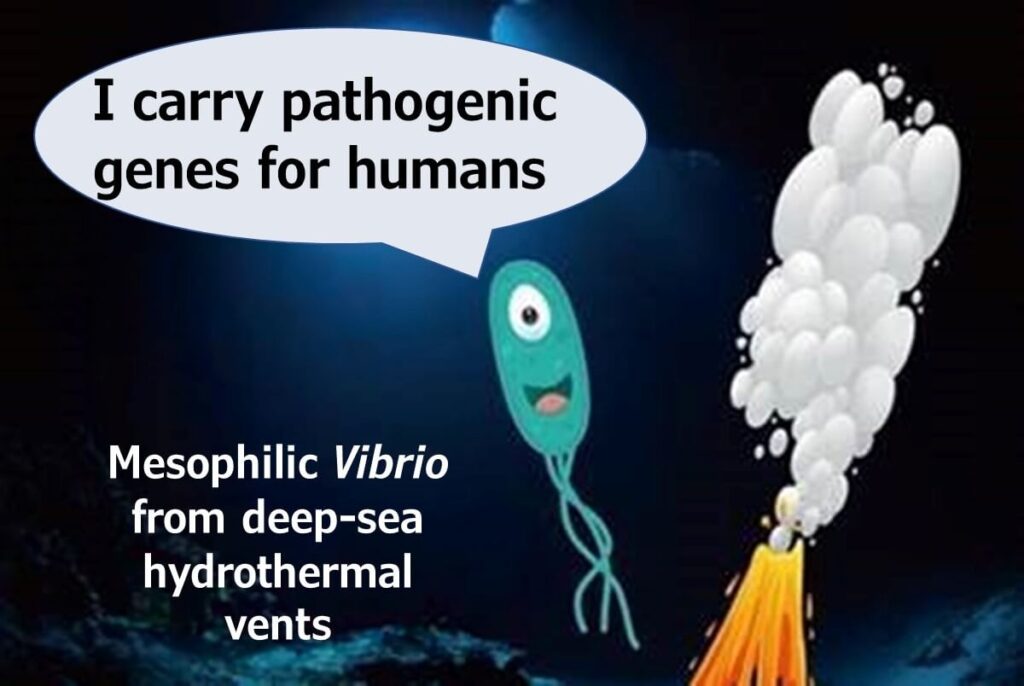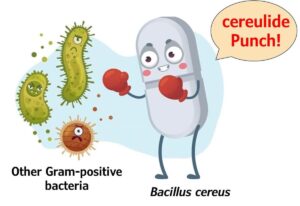What exactly is pathogenicity when it comes to pathogenic microorganisms affecting humans? Were the genes responsible for pathogenicity specifically developed to infect humans and cause food poisoning? In this article, we’ll explore how the genes that make Vibrio parahaemolyticus and Vibrio cholerae pathogenic to humans have evolved in the natural world, completely independent of any human infection routes.
Can Seawater Cause Food Poisoning?
Would we get food poisoning if we accidentally swallowed seawater at a beautiful beach? The answer is no.
Even in the height of summer, seawater temperatures don’t exceed 28°C, while our intestines are a cosy 37°C. Seawater’s organic matter concentration is like a soup diluted hundreds of times, whereas our intestines are like a soup concentrated hundreds of times. Essentially, the environment of seawater where marine bacteria live is entirely different from the environment inside our mammalian intestines, preventing marine bacteria from proliferating inside our guts.
The Curious Case of Vibrio parahaemolyticus and Vibrio cholerae
An exception to the rule is Vibrio parahaemolyticus and Vibrio cholerae. These two bacteria are marine organisms but can proliferate and cause infections in the intestines of mammals. This phenomenon is indeed puzzling. I used to teach my university students that Vibrio parahaemolyticus and Vibrio cholerae likely acquired pathogenic factors for infecting land mammals by some fluke.
However, a paper published in 2015 by Professor Rita Colwell and her team from the University of Maryland challenges this view.
Source Study
Hasan et al.
Deep-sea hydrothermal vent bacteria related to human pathogenic Vibrio species
Proc Natl Acad Sci U S A. 2015 May 26;112(21)
This paper is available on PubMed Central (PMC).
Colwell's group collected water samples around sulphide chimneys of hydrothermal vents along the East Pacific Rise, off the southwestern coast of Mexico, during dives by the deep-sea submarines Alvin and Nautile. From these samples, they isolated four mesophilic bacterial strains. These strains, thought to be new species of the Vibrio genus, were named Vibrio antiquarius.

Human Pathogenic Genes in Deep-Sea Bacteria
When the genome of V. antiquarius was examined in detail, it encoded genes and operons associated with ecological functions relevant to deep-sea environmental conditions, as expected. However, what was surprising was that this bacterium possessed several genes involved in human diseases, or genes similar to them.
Specifically, the V. antiquarius genome contained genes for a type III secretion system (T3SS), which injects effector proteins directly into the target host eukaryotic cells, often seen in Vibrio parahaemolyticus, known to cause severe diarrhoea in cholera infection models. While V. antiquarius did not have the tdh and trh genes of Vibrio parahaemolyticus, it did possess the tlh gene for thermostable direct haemolysin, with 97% and 84% similarity to the nucleotides of Vibrio alginolyticus and Vibrio parahaemolyticus, respectively.
The presence of human pathogenic genes in Vibrio species living in the ecologically distinct environment of the deep sea is astounding. The researchers concluded that these pathogenic genes likely serve a more fundamental ecological role beyond merely causing disease in humans. While the exact role remains speculative, it is likely related to interactions between organisms in seawater.
My Take on This Study

From my perspective, the key takeaway is the implication that what we call “human pathogenic genes” may have evolved for reasons entirely unrelated to humans. What struck me most in this study is the discovery of such genes in Vibrio antiquarius, a deep-sea bacterium from hydrothermal vent environments. This finding seriously challenges the long-standing assumption that pathogenicity factors in Vibrio species arose solely from interactions with mammalian hosts.
It suggests that these so-called virulence genes may have originally played roles in microbial competition, communication, or survival within complex marine ecosystems. Their presence in deep-sea organisms—far removed from human influence—invites us to reconsider how narrowly we define “pathogenicity.”
As someone who has long studied foodborne bacteria, I find it intellectually humbling to realise that traits we monitor so carefully in food safety contexts may have evolved for entirely different purposes. This perspective doesn’t necessarily alter our control strategies, but it deepens our appreciation for the evolutionary history behind them.
Additional Reading
For an explanation of why a human-centric view of microbiology is flawed, please refer to the following article:
Microorganisms and Humanity: A Brief Encounter in Earth's 4-Billion-Year History
E. coli O157: Why Only Humans Suffer Foodborne Illness While Cattle Remain Unharmed?
For those wanting to brush up on the basics of Vibrio parahaemolyticus, please refer to the following article:
The Hidden Dangers of Vibrio parahaemolyticus: Understanding a Marine Bacterium and Food Safety Measures

